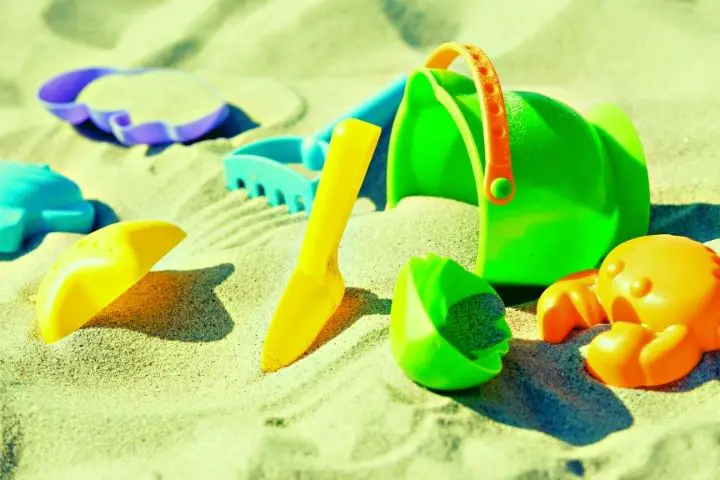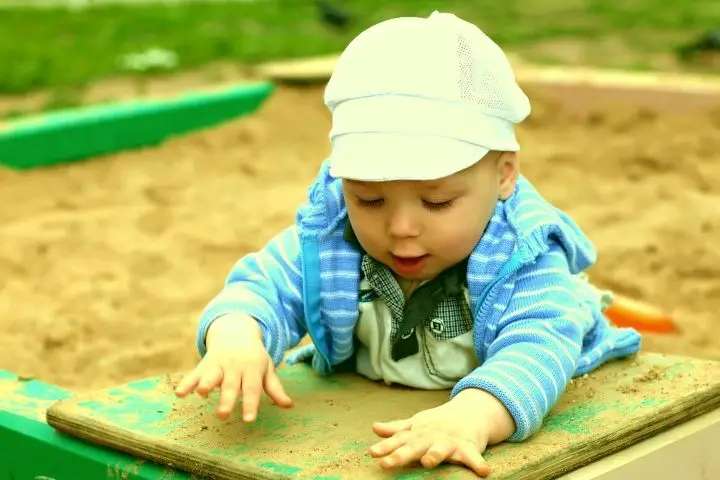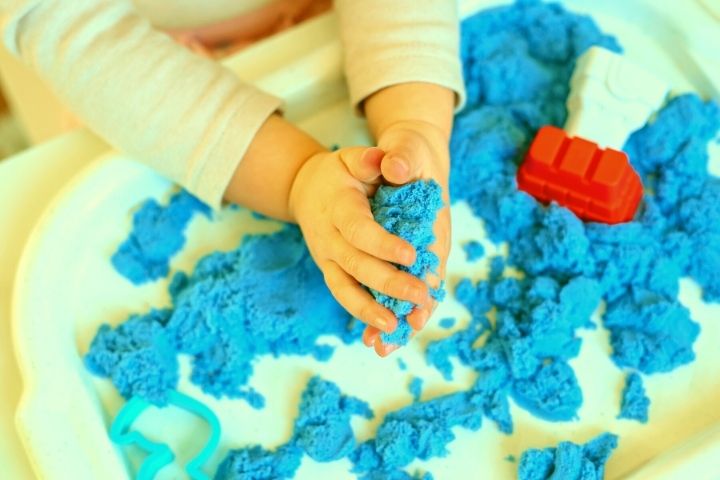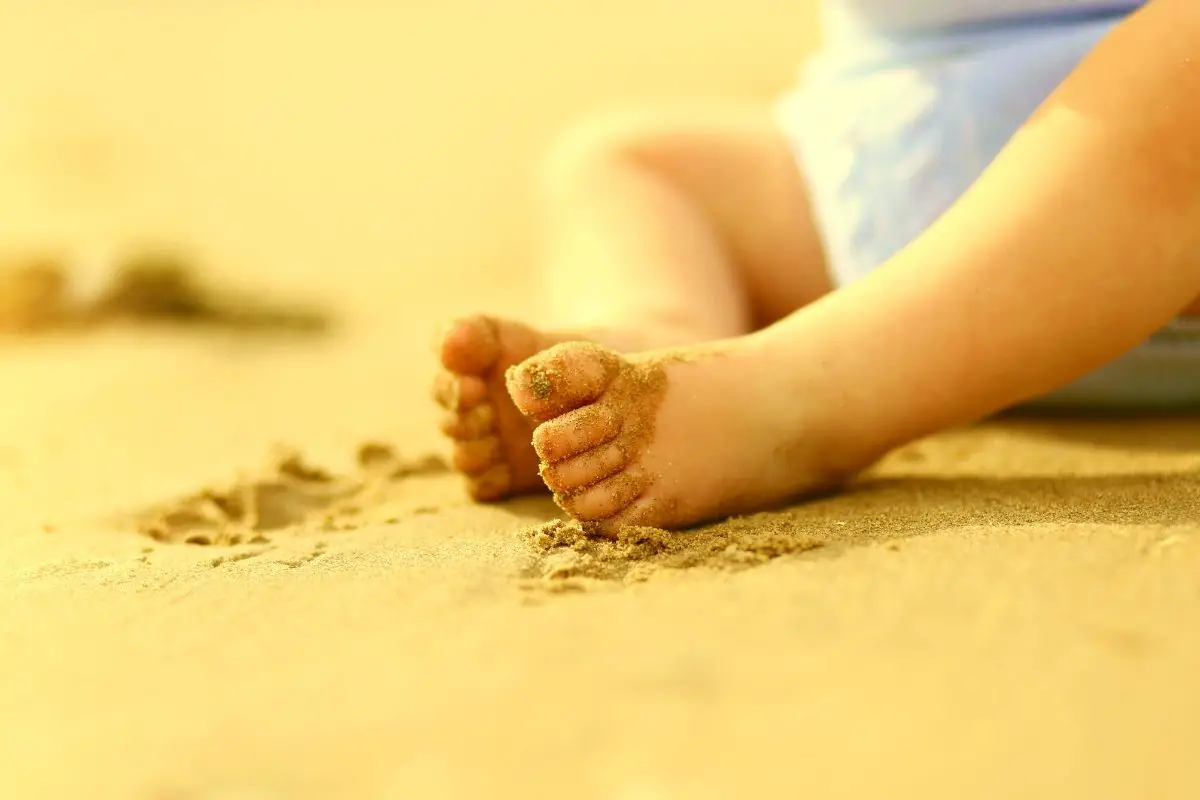Can Babies Eat Sand? | + what to do if your baby ingests sand
Babies (and many older kids!) like to put things in their mouths. It’s 100% natural. And no amount of diligence will ensure your baby never once eats a small quantity of sand or dirt.
The good news for any caretaker of a young child is that eating sand (especially in tiny amounts) is rarely dangerous, but it also shouldn’t be encouraged!
As a parent, I feel safe and happy for kids to continue playing with sandbox sand, however a bit of caution (like most things around young kids) is required!
Eating sand can cause choking, intestinal blockage, and bacterial infection. The risk is greatest for babies since they are smaller and more likely to ingest sand than anyone else.
Here’s what happens when a baby — or, really, anyone — consumes sand and the steps you can take for the safest outdoor adventures possible:
Is It Safe to Eat Sand?
A simple mouthful of sand isn’t cause for a trip to the emergency room. However, eating sand isn’t perfectly safe.
For babies and young children, the greatest risk associated with eating sand is choking. This can happen if there are rocks or other debris in the sand. Or when the sand clumps together in the esophagus.
Hypothetically, one could eat enough sand to cause an intestinal blockage. But the chance of this happening with a baby or toddler is very low. (Beach-loving dogs are the more likely victims of such complications. So don’t hesitate to phone your vet if a family pet consumes sand too!)
As far as long-term risk is concerned, the sand particles themselves aren’t to blame. Instead, it’s the harmful pathogens that are often present within sand you need to worry about.
Sand found on beaches, playgrounds, and in sandboxes is rarely — if ever — clean. Things like animal feces and fertilizer run-off can introduce harmful bacteria to the sand. When a baby puts that sand in their mouth, they also expose themselves to the bacteria.
Fortunately, serious infections caused by eating sand are rare. But it’s a very good reason to monitor young kids who may unwittingly eat contaminated sand or dirt while playing!
4 Steps to Take If Your Baby Eats Sand

1. Remove Excess Sand
First things first, remove the child from the sand so they can’t eat any more. Be sure to check their hands for additional sand.
If you catch a baby in the act of eating sand, getting their attention may be enough for them to spit it out. If not, you can gently scrape their mouth out with your fingers. There’s no reason to let them consume even more sand than they already have!
2. Offer Something to Drink
Rinse out the baby’s mouth with clean water to remove any remaining sand. Provide something to drink to help wash sand particles in their throat down to the stomach. This can reduce the chance of choking.
3. Monitor for Complications
Once the risk of choking has passed, continue monitoring for symptoms like diarrhea or severe constipation, stomach pain, vomiting, and fever. If you notice any signs of intestinal blockage or illness, contact your pediatrician for further guidance.
4. Invest In a Safer Sandbox
Babies are fast learners, and most quickly realize that eating sand is not as fun as it originally might seem. There’s no need to cancel all future trips to the beach! If you have a backyard sandbox, however, this is a perfect reminder to baby-proof the setup as much as possible.
Swap out any sand that may have already been contaminated by bacteria. Even well-maintained sandboxes should be emptied and cleaned every couple of years for safety.
Opting for high-quality play sand (or a child-safe alternative) is the best way to ensure your sandbox is free of potentially dangerous debris. Invest in a sandbox that can be easily covered to keep out animals — pets included — and water.

What Happens If a Baby Eats Sand?
To put it bluntly, any sand your baby eats should go right through them. Sand is inorganic — meaning our bodies can’t digest it — but isn’t large enough to cause any damage on the way through.
Depending on the amount of sand eaten, you might notice some mild constipation for a day or two afterward. This is normal but should be monitored in case of a more serious blockage.
A somewhat humorous side effect of eating colored play sand is that you might also notice a change in the color of your baby’s bowel movements. Again, this symptom alone is normal!
Frequently Asked Questions
Does Eating Sand Boost the Immune System?
Babies’ immune systems are strengthened by exposure to the environment — that includes, to an extent, eating sand.
This doesn’t mean you should give young children free access to sand! But it might offer some extra peace of mind the next time your baby tastes a handful of dirt before you can stop them.
What Happens If a Baby Eats Kinetic Sand?

A baby eating kinetic sand carries the same risks as eating regular sand.
Kinetic sand gets its intriguing physics from a silicone coating. This silicone is non-toxic when consumed in small amounts.
Also, kinetic sand is less likely to contain harmful pathogens than sand from a playground or beach.
If a baby eats kinetic sand, follow the protocol outlined above. Monitor for signs of choking and intestinal blockage, and contact your pediatrician with any concerns.
How Much Sand Should You Put in a Sandbox?
Most sandboxes allow for 1 to 3 inches of sand. However, you can adjust the amount of sand to suit your specific needs.
Keep in mind that putting less sand in your backyard sandbox won’t reduce the risk of ingestion. As long as your baby or toddler can grab a handful of sand, they can eat it!
Is Wet Sand Safe to Play In?
Yes, wet sand itself is safe to play in. The problem is that wet sand is more likely to harbor dangerous bacteria than sand that is kept dry.
To keep your kids’ sandbox as clean and safe as possible, select a sandbox with a cover or tarp to keep rainwater out. If the sand does get wet, take steps to dry it out as soon as possible to deter bacterial growth.





